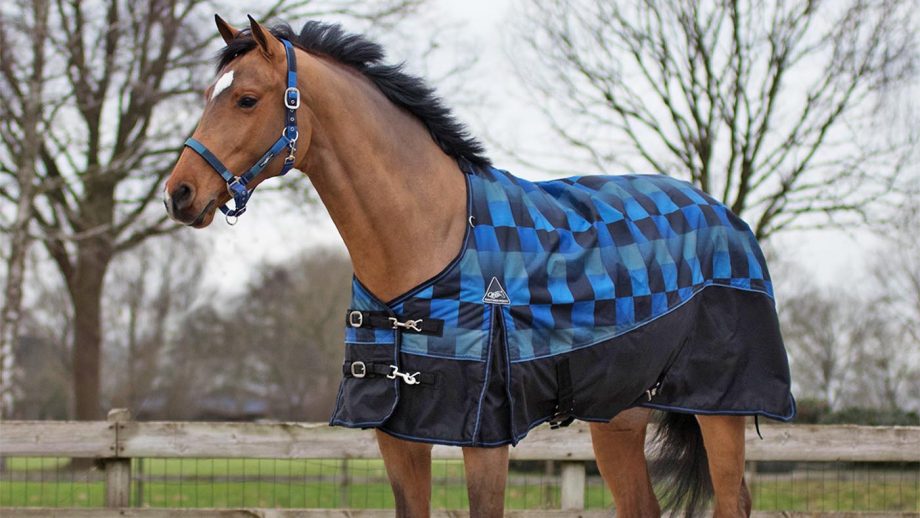
When to Blanket a Clipped Horse: Essential Tips for Care?
Share
If you own a horse, especially during the winter months, understanding when to blanket a clipped horse is crucial for their health and comfort. Clipping can make your horse more susceptible to colder temperatures, so its essential to know how to properly care for them to ensure their well-being.
This comprehensive guide is tailored for health-conscious pet owners, like yourself. We will explore the signs that indicate when your clipped horse needs a blanket, the different types of blankets, and essential factors to consider for effective horse care. Let's dive into the details!

Understanding Clipping and Its Benefits
Clipping your horse is not just a cosmetic choice; it has practical benefits. By removing excess hair, you can help your horse maintain a comfortable body temperature, especially in hot weather. However, during colder months or in harsh weather, clipped horses require additional care.
Some benefits of clipping include:
- Improvement in hygiene, making it easier to groom.
- Better sweat management during workouts.
- Reduction of skin diseases related to excess moisture.
Factors to Consider When Blanketing
Now that we understand the benefits of clipping a horse, we need to address when to blanket a clipped horse. Not every situation requires a blanket the decision largely depends on various factors, including:
Temperature and Weather Conditions
The most critical factor is the temperature. If it drops significantly, a blanket can provide much-needed warmth. Additionally, consider weather elements like wind and moisture. High winds can exacerbate the cold, necessitating a blanket for your horse's comfort.
The Clipping Style
Different clipping styles can impact your horse's need for a blanket. For example, a full clip leaves little to no hair on the body, making a blanket necessary, especially in cold weather. In contrast, a trace clip maintains some hair, potentially reducing the urgency for a blanket. Refer to resources like waterproofing a horse blanket for additional tips.
Age and Health of the Horse
Younger and older horses usually require extra warmth. If your horse is older or has health issues, consider blanketing them sooner rather than later. Additionally, working with a veterinarian can be invaluable when deciding on the needs of your horse.
Signs That Your Clipped Horse Needs a Blanket
Knowing the right timing can be tricky. Here are some signs that indicate your clipped horse might need a blanket:
- Your horse is shivering or appears uncomfortable.
- Goosebumps appear on the horse's skin.
- Your horse is standing in a huddled position.
- Constantly searching for shelter or warmth.
Types of Horse Blankets
When deciding when to blanket a clipped horse, understanding the types of blankets available is essential:
Stable Blankets
These are generally thicker and provide warmth, ideal for use when the horse is inside a stable, away from the wind and elements.
Turnout Blankets
These are made to withstand the outdoor elements and are often waterproof. They allow your horse to stay warm while outside, even in wet weather. It's critical to ensure that your blanket fits well, as mentioned in this guide on measuring a horse for a blanket.
Choosing the Right Fit
Blankets must fit correctly to ensure comfort. A poorly fitting blanket can cause rubbing, discomfort, or even injury. What should you look for?
- Choice of size based on your horse's measurements.
- Adjustable straps to maintain a secure fit.
- Material that prevents chafing and irritation.
Blanket Care and Maintenance
Just like your horse's well-being, the blanket's maintenance is crucial. Here are some maintenance tips for the longevity of your horse blanket:
- Wash regularly according to the manufacturer's instructions.
- Check for damages or wear frequently.
- Store in a dry environment to prevent mildew.
How to Tell if Your Horse Is Too Warm
Monitoring your horse is key. If your horse shows signs of sweating or discomfort under the blanket, it may indicate they are too warm. Adjust accordingly, and if in doubt, remove the blanket.

FAQs
Q: What temperature should I blanket my clipped horse?
A: Generally, if the temperature drops below 50F and your horse is clipped, it is advisable to use a blanket.
Q: How do I choose the right blanket for my horse?
A: Measure your horse for the right dimensions and consider factors like thickness and waterproofing for the specific climate.
Q: Can a horse get too hot under a blanket?
A: Yes, horses can overheat if blanketed when it's not necessary. Always monitor their comfort levels.
For more insights on caring for your horse, check out this horse blanketing FAQ to see additional guidance concerning the proper use of horse blankets.
As an Amazon Associate, I earn from qualifying purchases.
